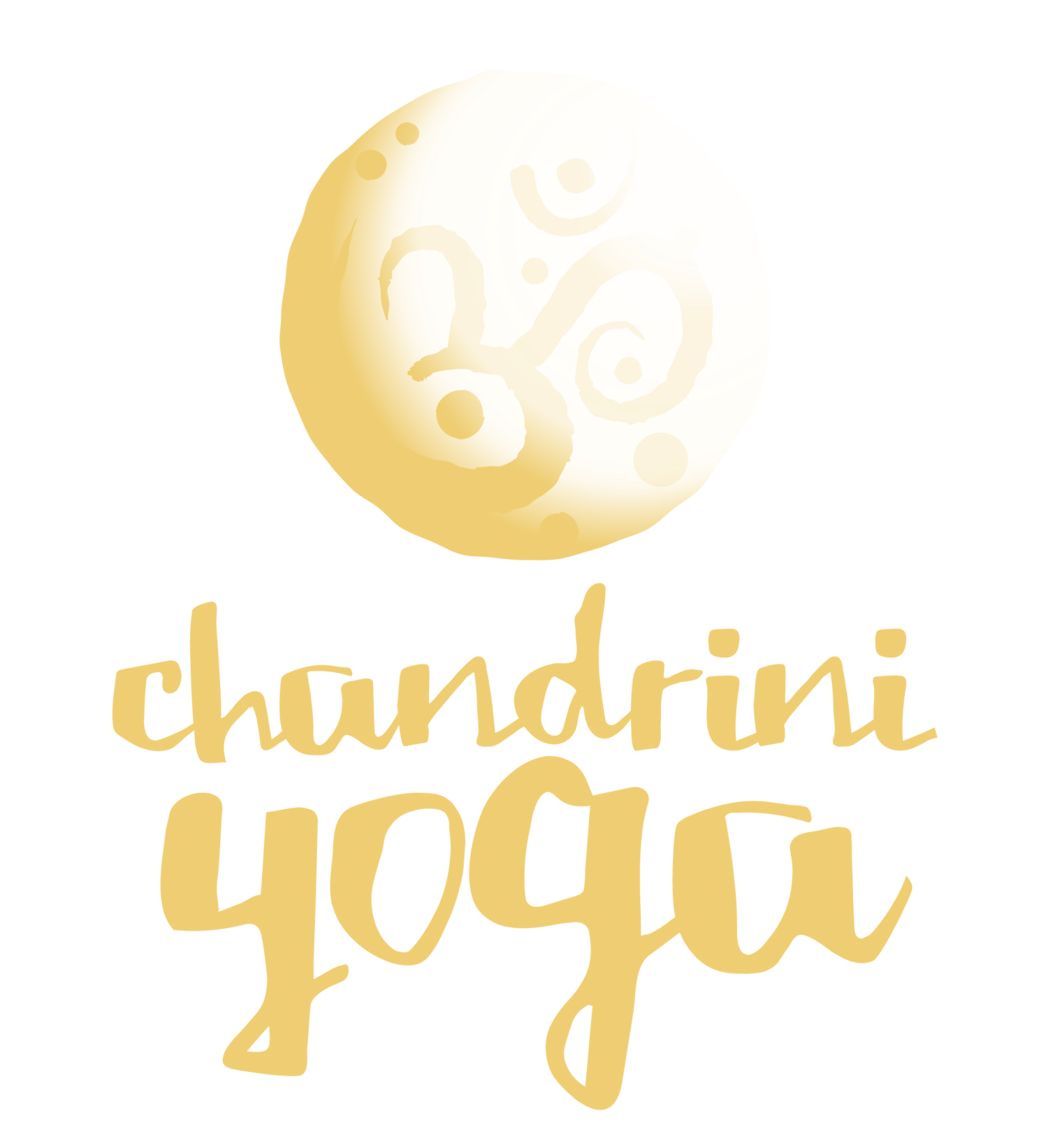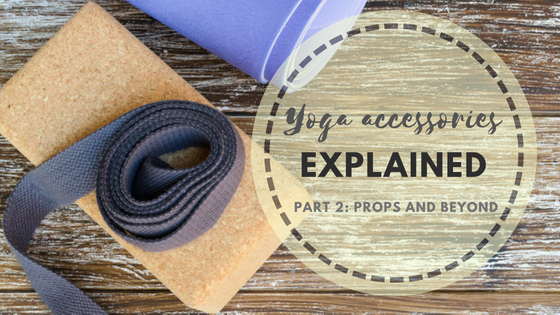yoga accessories explained: props and beyond
/This blog post contains affiliate links to products. I may receive a commission for purchases made through these links.
Whether you’re a beginner practitioner or a long-time yogi, you may find it hard to keep up with the many and varied yoga accessories and props that continue to be released to the market on a regular basis. As I explained in the first part of this Yoga accessories EXPLAINED series, the growing popularity of yoga not only has resulted in its worldwide spreading, but it has also established a solid foundation for the ancient practice to evolve into a multi-billion industry. Today, a practice for which one of its most basic tenets required austerity has grown into a potentially luxurious hobby, depending on how much you’re willing to spend.
But what is it that you actually need to practice yoga? And what is it that is truly useful, and can help you enhance and deepen your practice safely and effectively?
My personal opinion, as you may have inferred from my prior blog post, is that less is more. In this blog post, I will share a few basic props that can help you deepen your practice, and a couple more which, though not essential, you may find fun to explore.
The very basics
JURU Cork Yoga Block and Cotton Yoga Strap from JURU Yoga.
Blocks, straps, and blankets are the most basic props that you will likely find at any studio, and also at any store selling yoga accessories. They’re available worldwide and can also be easily substituted with items that you already have at home, such as a thick book for the block, a long scarf, tie, or even a belt for the strap, and a regular blanket. Of course, if you are going to be using them regularly, you may want to invest in actual dedicated yoga props.
Blocks are available in different materials. The most popular may be foam, due to its light weight and affordability, and this will likely be the material that you’ll see at most yoga studios. However, blocks can also be made of cork (pictured above) and even wood (which is more costly, and also heavier). In my personal practice, I prefer cork yoga blocks not only because they’re more eco-friendly than foam, but because I feel they’re more sturdy and stable, especially if I want to use them under my hands for arm balances, or between my shoulder blades for passive backbends. With so many different blocks available in the market, you can feel free to experiment with different things according to your budget until you find your favorite!
Blocks are very versatile and can be used for a variety of purposes such as bringing the ground closer to you, promoting correct alignment, adding height for arm balances, supporting passive backbends, and generally adding a supportive surface to a pose when needed.
Straps are typically made of hemp or cotton with a variety of cinches (plastic, metal, or quick release.) They also tend to come in different sizes, though you can expect the standard size to be somewhere around 170 cm or 6 feet. (Some brands offer longer straps that may come in handy if you’re very tall.) Same as with the blocks, you don’t really need to pay an arm and a leg to benefit from the use of a strap in your practice - if you’re crafty you can even make one yourself!
Set of two large Cork Yoga Blocks from Kurma Yoga, Natural Fitness Hemp Yoga Strap, and locally sourced handmade blanket from Figuig, Morocco.
Straps are generally used as a way to add length to your limbs, allowing you to safely enter the correct alignment for poses that would otherwise be inaccessible to you if you’re still working on your flexibility. Think for example of a pose like utthita hasta padangusthasana (extended hand to big toe pose): if you’re unable to grab your toes and extend the leg, you have two ways to approach the pose. You can either bend the knee and still work on your balance, until you have the flexibility. Or you can make up for the lacking flexibility by “lengthening” your arm using a strap around your foot, which will allow you to continue to work both on the balance and the flexibility part of the pose, striving to straighten the knee safely within the correct alignment. Other uses of a strap include assisting advanced techniques such as flipping the grip (full shoulder rotation), providing the necessary resistance to build muscle memory by looping them around the upper arm in arm balances and planks, and keeping the body/limbs in place in passive/restorative yoga poses.
Blankets are another often underrated but very basic yoga prop that you can easily substitute with any blanket you have at home. They can be used to provide extra cushioning for the joints when the mat is not enough (think kneeling poses such as camel or low lunges, for example.) They can also be used under the shoulders during shoulderstand, rolled up under the heels in poses like malasana (garland pose), rolled up or folded under the back for a gentle heart opening experience, or to add height and support in poses like child pose (placing it between the thighs and calves) in Yin or Restorative types of yoga. Let’s also not forget that we can use it to cover ourselves up for a cozy savasana too!
And… this is it! Surprised? You really don’t need much else to maintain a healthy, effective, and sensible yoga practice, but just for fun, let’s take a look at…
Some non-essentials that you may find useful as well!
Pranamat ECO acupressure mat from Pranamat, yoga bolster from Locamed (Morocco-based), Coral Snake Mala from Mukhas Collection, and Basic Yoga Wheel from Dharma Yoga Wheel.
The Pranamat ECO is an acupressure massage mat intended to relieve minor muscle aches and pains. These types of mats also claim to improve physical well-being, increase skin elasticity, boost energy, and induce relaxation, promoting better sleep. You can read more about the benefits of the Pranamat in their own blog here. Personally, while I don’t think an acupressure mat is an essential must-have, I do enjoy having one, and like to incorporate it at the end of my yoga practice, to enjoy an extra relaxing savasana. I have also found it useful when recovering from a middle back injury that had lasted for months and got noticeable better once I started using the mat consistently. If you’re considering giving it a go, you can enjoy a 10% discount to any of their products and sets by following the link provided above, or by entering the code CHANDRINI10 at checkout.
Yoga bolsters can be defined as a type of cushions or pillows used to support and cushion the body in different poses, most commonly in Yin Yoga or in Restorative Yoga practices. They can be cylindrical (like the one in the picture) or rectangular, and they’re relatively firm. If you don’t regularly practice Yin or Restorative yoga, and especially if you’re quite flexible, you may never feel the need for a prop like this. But if you practice any of these two types of yoga, experience a lack of flexibility, or like to hold poses for a long time, a bolster may come in handy. They can be easily substituted at home with pillows or firmer cushions, so whether you actually need a dedicated bolster will depend on your actual practice and needs.
Malas (like the Coral Snake Mala from Mukhas Collection) are prayer beads used in meditation, in the same way in which you would use a rosary or a tasbeeh. Malas typically consist of 108 beads plus a bigger bead called the guru bead. Though they’re becoming increasingly popular as fashionable necklaces, traditionally malas are considered sacred items used for spiritual purposes. You may wear it to remind yourself of your spiritual intention, and hold it in your hands during meditation for extra focus, or to count mantra repetitions in the practice of japa. I personally own a variety of malas from different brands, but feel a special connection to the ones from Mukhas Collection, which have an exceptionally authentic feel. Both their beautiful rudraksha and fragrant sandalwood are sourced from sustainable plantations. I personally own more than one of their pieces (and so do my kids!) and, though they may not be essential for a yoga practice, I enjoy keeping them close to my skin as they help calm my mind and keep me focused on my journey. You can enjoy a 10% off discount to any of their products with code MINTYOGINI10 at checkout.
Yoga wheels are narrow and wide cylinders made of plastic, wood, or a variety of materials, that can be used to enhance flexibility, offer a more challenging practice, or assist in a variety of asanas. Personally, however, the only way I use my wheel is rolling on top of it for a while to warm-up and open my back before I start my daily practice. When it comes to assisting poses, I find that most “wheel-assisted” suggestions can generally be done with blocks or other home items, making this a fun prop to play with, but not an absolute must-have.
I hope this article has helped shed some light on the fascinating world of yoga props. Please share your opinions on yoga props and ask any questions in the comments - I would love to hear more about what props other people find useful, and how you make the most out of them.
If you’re a brand and would like me to review your product, please feel free to reach out via this contact form.





























